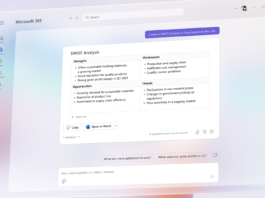Microsoft, a name synonymous with innovation and technology, has once again made headlines with its latest earnings report. But what’s the real story behind the numbers? Let’s delve into the details and understand the implications for investors, tech enthusiasts, and the market at large.
Microsoft’s Financial Performance: Beyond Expectations
- Impressive Numbers: Microsoft Corp. surpassed both profit and revenue expectations for its recent quarter. However, post the announcement, its shares dipped by more than 3% in extended trading. Why the dip despite the positive news? Let’s explore further.
- AI and Its Financial Implications: Microsoft’s focus on Artificial Intelligence (AI) is evident. The company’s AI revenue impacts are expected to be more prominent in the second half of the new fiscal year. Amy Hood, Microsoft’s CFO, highlighted that capital expenditures might see a sequential rise each quarter as the company amplifies its AI capabilities. But what does this mean for the future?
Intelligent Cloud: The Revenue Driver
- Revenue Jump: Microsoft’s cloud-computing segment, named Intelligent Cloud, witnessed a 15% surge in revenue, amounting to $24.0 billion. This surpassed analysts’ expectations, which were set at $23.8 billion. On a currency-neutral basis, the growth rate stood at 17%.
- Azure’s Growth: Azure’s constant-currency sales growth is projected to be between 25% to 26% for the September quarter. While the market anticipated a growth closer to 28%, the consumption aspect of the business remains robust, as noted by Evercore ISI analyst Kirk Materne.
- The Bigger Picture: Satya Nadella, Microsoft’s Chief Executive, emphasized that the cloud migration journey is still in its “early innings”. He also spotlighted the emergence of a “new world of AI driving a set of new workloads”. The potential total addressable market (TAM) is expansive, but Microsoft also faces the “law of large numbers” due to the vast scale of its cloud business.
Other Noteworthy Highlights
- Net Income: Microsoft reported a net income of $20.1 billion, or $2.69 a share, a significant rise from the previous year’s $16.7 billion, or $2.23 a share. This easily outperformed the FactSet analysts’ prediction of $2.55 a share.
- Overall Revenue: The company’s total revenue climbed to $56.2 billion from $51.9 billion, again surpassing the anticipated $55.5 billion.
- Productivity and Business Processes: This segment, which encompasses LinkedIn and both commercial and consumer versions of Office, reported a revenue of $18.3 billion, marking a 10% year-on-year growth.
- More Personal Computing: This segment, which includes Windows and Xbox content and services, saw a slight dip of 4%, amounting to $13.9 billion.
The Road Ahead: What’s Next for Microsoft?
The tech giant’s focus on AI is evident, and its Copilot offerings are expected to bring forth new opportunities. Nadella expressed optimism about the potential of these offerings to complement operational expenses and enhance efficiency.
Evercore’s Materne labeled the overall results as “solid”, especially considering the prevailing macroeconomic challenges. He believes Microsoft’s investment narrative will strengthen in the latter half of the year as some headwinds reverse and comparisons soften.
So, what’s the takeaway for investors and tech aficionados? Microsoft continues to be a dominant force in the tech world, with its strategic investments in AI and cloud computing promising a bright future. However, as with all investments, it’s essential to keep an eye on the broader market dynamics and make informed decisions.
Are you ready to be part of this technological revolution? Dive deeper, stay informed, and seize the opportunities that lie ahead.



